Local News
Winnipeg Jewish Theatre to premiere first live show since February 2020

By BERNIE BELLAN Amidst all the plans that had either to be shelved or retooled as a result of Covid, perhaps no organization within our community has had to constantly rejig its plans more than the Winnipeg Jewish Theatre.
Beginning with the cancellation of a new play by Winnipeg’s own Daniel Thau Eleff, “Narrow Bridge”, which was scheduled to receive its world premiere on March 28, 2020, followed by a series of changes to the 2020-21 program, ultimately the WJT did find success going online with two separate productions this year: “Becoming Dr. Ruth” – in February, featuring a repeat of her award-winning role by Mariam Bernstein – and which was offered on demand to at-home audiences; and, more recently the free streaming online of “True Colours” in March.
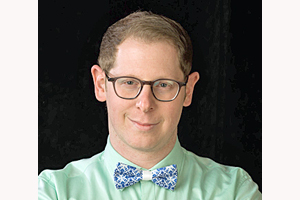
While WJT Artistic Director Ari Weinberg was quite pleased with the reception that both those productions received from at-home audiences, he’s more than a little excited to once again being able to offer Winnipeg audiences live theatre, beginning August 26, with eight performances of a play that is particularly timely given the circumstances in which we’ve all found itself, titled “Dear Jack Dear Louise”.
Recently I had the chance to talk to Ari about this impending production which, by the way, features the youngest member of the immensely talented Frohlinger siblings, Becky Frohlinger (sister to Alexandra and Joey), along with another talented Winnipegger, Justin Stadnyk.
Following are excerpts from my conversation with Ari Weinberg:
JP&N: “When was the decision made to do a live show?”
Ari: “The plan was always to do a live show. Our plan all along was to do two digital shows, and then a live show – and this is it. We had hoped to do it in May, and then it got bumped. Then we were hoping for late June or early July, and then it got bumped. So this is actually the third time we planned to do it.”
JP&N: “What will the seating capacity be?”
Ari: “Eighty seats.”
JP&N: “How many performances will there be?”
Ari: “Eight performances. We usually do eight, but if it continues to sell as well as it has been we can add one or two shows.”
JP&N: “So tell me something about this show. I’ve never heard of it.”
Ari: “Well, the reason that almost no one has heard of it is that it actually premiered in December 2019, just before the start of Covid. We’re doing the Canadian premiere of it; it’s actually the second production of it anywhere in the world.
“Ken Ludwig is the playwright. He’s a master of comedy. He wrote ‘Lend Me a Tenor’ – a very funny farce. He wrote the book for ‘Crazy for You’, also a very funny musical.
“This is the story of his parents. All four of his grandparents met at a barbeque during the Second World War. One set had a single son, the other had a single daughter. The son was off being a doctor in the army and the daughter was off aspiring to be in musicals in New York City.
“So the grandparents thought: ‘We should get them to start writing to each other. So Jack picked up a pen and wrote to Louise and she responded, and they kept in touch throughout the war. They were supposed to meet, but various obstacles kept popping up, so they wrote letters to each other for four years and met at the end of the war – and got married, and had Ken and his brother.
“When they both passed away, he inherited the letters that they had written to each other, and he thought: ‘There’s a play here’, so it’s sort of an homage to his parents.”
JP&N: “You know, this reminds me of a play put on at the Fringe Festival a few years ago (2014, to be exact) by Susan Freedman, who was the daughter of the late Sam and Brownie Freedman. (The play was titled “Spilling Family Secrets”.) It was a one-woman show based on letters they had written to one another.”
Ari: “This one is quite hilarious, too, especially Louise. She’s quite a vivacious character who’s trying out for Broadway musicals. She’s excitable and she has all kinds of hilarious adventures that she relates to Jack throughout the play.”
JP&N: “It must involve more than reading letters.”
Ari: “No – and that’s why I planned it. It’s a perfect ‘social distancing’ play. The characters don’t even meet until the final moment of the play. They’re in their two separate worlds.
“This is actually a perfect show to do in a tent. He has his army tent and a little foot locker and she’s in a boarding house in New York City, but it’s the two of them in their separate worlds conversing with one another.”
JP&N: “Is there any singing, because I know that both Becky and Justin are very talented singers?”
Ari: “No – they’re both incredible singers, but there’s no singing in the play.”
JP&N: “So maybe we can ask them to stay after the play is over, pass a cup around, and ask them to sing for us.”
Ari: “Yah, we’ll ask them to take requests.” (Ed. note: This is all tongue in cheek, in case you think this is meant to be taken seriously.)
JP&N: “Let’s talk a little about Becky (Frohlinger) and Justin (Stadnyk). I know Becky very well and I also know Justin from a show that he was in with my son at Rainbow Stage” (which also included Alexandra and Joey Frohlinger, but not Becky, who was too young to appear on Rainbow Stage at that time).
Ari: “This is actually their fifth show together. It feels like a homecoming in many ways. It’s great to have Becky back in Winnipeg.” (Ed. note: When we last mentioned Becky in a column it was in August 2016, when Becky was appearing in a production of ‘Shrek the Musical’ at Rainbow Stage. Becky was already a seasoned performer by then, also having just graduated with a Bachelor of Fine Arts in Musical Theatre from Elon College in North Carolina.)
JP&N: “We’ve been following the careers of all three talented Frohlinger siblings for years.”
Ari: “I know, I’ve been hearing lots of anecdotes about the Frohlingers.”
(A perusal of Justin Stadnyk’s website reveals that he was born in 1985 and has been performing in the musical theatre world for years. Justin is also a dedicated yoga practitioner and teacher.)
“Something that might interest you is that Justin and I were in the same class together at Sheridan College.
“Justin became a dad during the pandemic and this is his first show back. This show is a labour of love for the both of them – as well as the Winnipeg Jewish Theatre.”
JP&N: “Okay, so how long does the show run?”
Ari: “It’s 90 minutes – without an intermission.”
JP&N: “It’s under a canopy, is it?”
Ari: “Yes, it’s under a tent. Three of the sides are open. We’ve got good air flow.”
JP&N: “Are you encouraging people to wear masks?”
Ari: “Masks are strongly recommended.”
JP&N: “Do you have to present a proof of vaccination to enter?”
Ari: “No, we checked with the province, and because we’re outdoors and because there’s good air flow, and because we’re under 100 people, and because people are socially distanced in the seats – seats are either in pairs or singles – vaccination is not mandatory. We’re assuming that the majority of our audience is vaccinated, but that’s why masks are strongly recommended.”
JP&N: “Let’s talk a little about the two shows you did online this year. I know the Dr. Ruth show did quite well.”
Ari: “Yes, it was a great success for us. We had lots of people watch it – and it was watched all over the world.
“Then we did our production of ‘True Colours’ – and it’s currently part of the Stratford Festival streaming platform.”
JP&N: “I was going to ask you about Daniel Thau-Eleff and the lousy luck he’s had. His play (‘Narrow Bridge’) has been canceled twice now, hasn’t it?”
Ari: “We have a plan to do one digital production in the fall, then two live productions, both Canadian premieres. One is a production we’re hoping to do live and in person in February, and the other in a tent again next summer. It’s a musical that we’re hoping to do live at the campus.
“Then, the following year, we’re hoping we’ll be fully back in the season, and that’s when we’re hoping ‘Narrow Bridge’ will make it to the stage.”
JP&N: “So that’ll be 2022-23 – right?”
Ari: “Yes.”
JP&N: “It’s becoming ‘A Bridge Too Far’ by now.”
Ari: “Yes, a very long, narrow bridge.”
JP&N: “Coincidentally, I’m going to be running a story this issue about the Jewish Foundation and how they came through for so many Jewish organizations during the pandemic, including Winnipeg Jewish Theatre. I don’t know if you had been able to carry on without that funding.”
Ari: “A hundred per cent. They and the Winnipeg Foundation have been great foundations of support for us.”
JP&N: “Anything else you want to say, Ari?”
Ari: “Just that we’ve already sold 50% of the available tickets (as of August 12), so this is not a show where you should sit back and think about whether you want to buy tickets. This is definitely a case where you should pick up the phone and call or get to a computer and go online and book.”
Local News
New Israeli restaurant opens in River Heights

By BERNIE BELLAN (July 6, 2025) It’s been a long time since our community has been able to welcome the opening of a restaurant that specializes in Israeli food.
That void is now going to be filled with the opening of The Green Falafel, at 1833 Grant (corner of Centennial – next to the Subway).
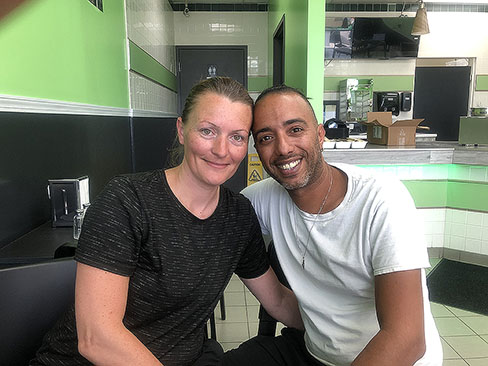
The restaurant is the fulfillment of a dream long held by the husband and wife team of Ariel and Eden Maudi, who have been living in Winnipeg the past 11 years.
Ariel, who was born in Israel and grew up in Beer Sheva, says that he worked in telecommunications in Ramat Gan for several years. He adds though that he had always dreamed of owning his own falafel stand in Israel, but life was difficult there and he decided to come to Canada as a tourist to see whether there were any opportunities here for him, Eden and their two young children.
Eden, who was born in Russia and moved to Israel with her family in 1996, stayed behind with the two kids, who were both pre-schoolers, while Ariel tested the waters in Canada first.
Ariel says he came to Canada as a tourist in 2013. His first stop was in Toronto, where he acquired his 1st class driver’s license. At the end of 2013 he moved to Winnipeg where he began working as a truck driver. Soon he found himself employed as a successful sales person at Vickar Nissan where, he says, he once achieved the status as the top car sales person in Canada. After working at Vickar Nissan for a number of years, Ariel began working as an installer for Bell MTS.
Meanwhile, Eden began working at a Walmart, later at the Costco on Regent.
But, when the opportunity to move into a space that had been previously occupied by another restaurant, but which had closed, became available, Ariel and Eden decided to open their own Israeli restaurant in an area that hadn’t seen Israeli food served since the controversial closure of Bermax Café in 2019.
The Maudis say that they will be serving a variety of Israeli dishes – all vegetarian, and that they will be fully kosher.
The “green” in Green Falafel, by the way, Ariel Maudi explains, comes from the cilantro and parsley that are added to the chickpeas. In addition, their pitas will be coming from Israel and will be baked fresh daily.
The Green Falafel will be open from 10-8 daily. Delivery will be available through Uber Eats and DoorDash.
Call 204-557-7837 for information.
Local News
Previews of shows with Jewish performers at this year’s Fringe Festival July 16-27
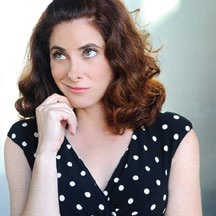
For show dates and venues go to winnipegfringe.com
By BERNIE BELLAN As has been our custom for many years now we try to find shows that have either Jewish performers or themes that would have particular appeal for Jewish audiences. Many of the Jewish performers at this year’s festival have been here before, but several are new. In no particular order here are blurbs about the shows we’ve found that fit the criteria I’ve just described. (By they way, if we’ve omitted a show that should be included in our list there’s plenty of time to get added to this post. Just drop me a line at jewishp@mymts.net.)

You’ve Been Served: A One-Woman Show About Divorce, Cults, and Coming of Age at Midlife
Noemi Zeigler
You are hereby summoned… to laugh, cry, and maybe belt out a Streisand number in solidarity. You’ve Been Served is a raw and riotous solo comedy by writer-performer Noemi Zeigler. It all begins when Noemi is served divorce papers on top of a garbage bin lid while taking out the trash—an undignified start to a full-blown midlife unraveling.
At 50, still clinging to her dream of becoming a singer, she falls under the spell of a music producer slash self-help guru, joins a spiritual cult, and, instead of landing a record deal, she lands in jail. Behind bars, with help from her long-buried inner child, she begins to reclaim her voice and her power. Turns out, dreams really do come true—just not the way she expected.
The show features vividly drawn characters—including a manipulative cult leader, a toxic ex-husband, and a jail guard named Roach who shares Noemi’s obsession with the fashion of Charlie’s Angels (the ‘70s TV version, of course.)
With salsa dancing, twerking, and a belting rendition of Don’t Rain on My Parade, Zeigler dives into abandonment, reinvention, and self-rescue. As she confronts perimenopause, she discovers it’s not the end—it’s the new puberty. The show touches on grief, sexuality, and spiritual confusion, but Noemi’s childlike optimism asks: What if your breakdown is actually your breakthrough?
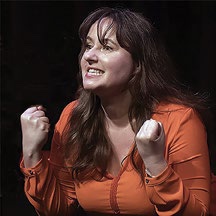
You’re good for nothing… I’ll milk the cow myself
Written & Performed by Natacha Ruck
France, 1981: The first socialist president is about to be elected and young Natacha is ready to implement her own political platform. But first, she has to take down the schoolyard bully,emasculate the rules of French grammar and make off with grandmother’s chocolate.
If you think you know the limits of Jewish mothers, evil grandmothers and transcontinental lovers, meet Natacha Ruck’s family. This true tale of three generations of women, facing three world wars, is equal parts hilarious, shocking and zany.

A One Human Being, Potentially Comedic Performance of Beauty and the Beast NEW WORK!
Written & Performed by Alli Perlov
Be our guest! Local high school drama teacher Alli Perlov is back for a tale as old as time. Can she sing? Not really. Can she act? That’s debatable. Will you laugh? Oh… probably.
Perlov plays dozens of characters, some human, some animal, and many objects, in a comedic exploration of Beauty and the Beast.
In an homage to this brilliant musical adventure, through witty commentary and unstoppable energy, Perlov aims to entertain an audience that isn’t forced to be there like her students.

Hockey Sticks and Beaver Pie
Written & Performed by Melanie Gall
Take a trip around Manitoba. From the 30,000 ft. St. Adolphe snow maze to the Narcisse snake dens! After all, where else holds both the title of Slurpee Capital of the World and the Guinness Record for the most people simultaneously howling like wolves?
Deanna Durbin, Terry Jacks and Burton Cummings are among the many homegrown stars, and Hockey Sticks features their music along with original songs and the stories that make this province unique.
Starring Melanie Gall from past shows Piaf & Brel, Ingenue and Toast to Prohibition
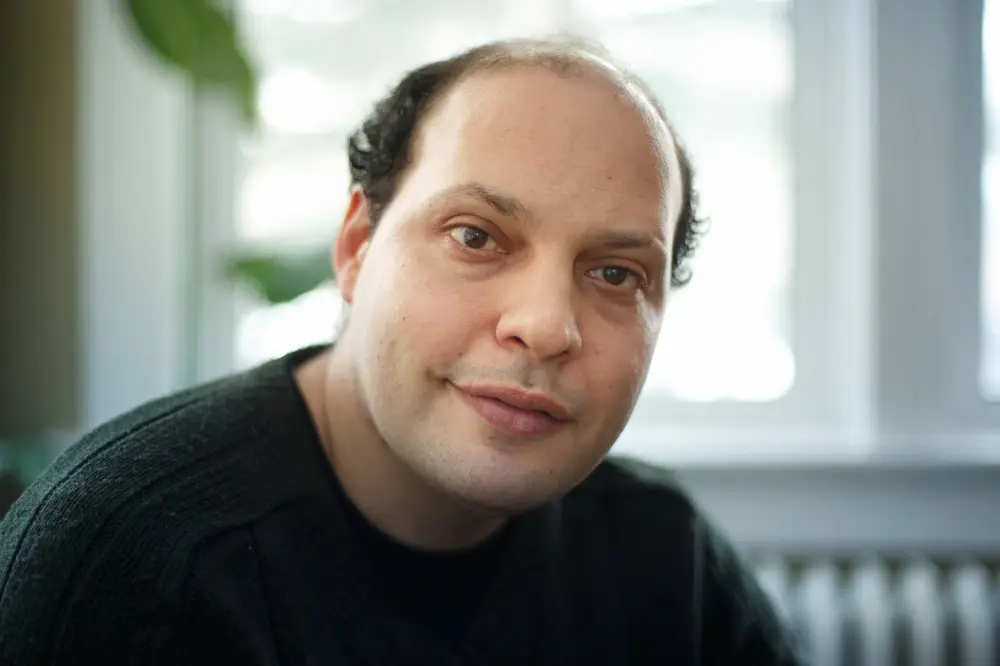
Nerohilarity Exposed
Produced by Adam Schwartz
We all sometimes feel exposed, whether that’s as a fraud or a pretender.
The performers of the award-winning Neurohilarity show, Danielle Kayahara (Laugh Out Loud CBC), Carole Cunningham (Yuk Yuks, The Debaters), Adam Schwartz (Winnipeg Fringe) and Rollin Penner (Yuk Yuks, CBC, Rumors, Winnipeg Comedy Festival), apply a comedic spin to the experiences that make us feel insecure, stripping away the emotional weight with nittygritty jokes and stories that will have you laughing uproariously.
Brilliantly awkward.

A Lesbian in the Kitchen
Willow Rosenberg
Professional lesbian Willow Rosenberg takes you on a journey through the centuries, superstitions and tablespoons of her lifelong passion for baking in this spiritual successor to 2024’s Jenny Award-nominated A Lesbian in a Bear Store.
Whether you have a favourite spatula, bake once or twice a year, or live in constant fear of being told to “just fold it in”, this one-woman show about family, joy, tradition (but make it gay),
Judaism, comfort, home (but make it gayer*), love, chemistry and magic is for you!
*Who’re we kidding, it’s all gay!

Eleanor’s Story: An American Girl in Hitler’s Germany
Written & Performed by Ingrid Garner
(Ed. note: Although Ingrid Garner isn’t Jewish, we thought the theme of this show might have a special appeal for Jewish readers.)
Based on Eleanor Ramrath Garner’s best-selling memoir, this 16x internationally award-winning adaptation – performed by her granddaughter, Ingrid Garner – details Eleanor’s youth as an American caught in Second World War Berlin.
Punctuated with humour and accompanied by cinematic sound and video, Garner embodies her ancestors in this coming-of-age odyssey, delivering an account of war that is more relevant than ever.

Reviewing The Free Press 2
Benji Rothman
The Winnipeg Free Press has run amok, reviewing each and every Fringe show over the past two decades without consequence or recourse. Now, it’s their turn… again.
In this refurbished work that debuted at last year’s Winnipeg Fringe, Benji Rothman once again takes the Winnipeg Free Press to task. In this (mostly) new, (hopefully) hilarious 45-minute show, Rothman dives deep into their past and exposes their faulty journalism, imbalanced reporting and, of course, embarrassing typos.
Local News
Jewish performers at this year’s Winnipeg Folk Festival July 10-13

The Black Sea Station
Long ago, there were the klezmorim, itinerant musicians who roamed the back streets of Eastern Europe, playing at parties for meals and a few coins. The sound they honed then was a visceral exploration of life’s joy, and its loss; they could whip audiences into a frenzy of dancing, or bring them to tears with the mournful wail of a clarinet. Today, Winnipeg’s own The Black Sea Station is carrying on this tradition. Featuring Daniel Koulack (bass), Victor Schultz (violin) and Myron Schultz (clarinet) — cofounders of seminal local klezmer act Finjan — along with Moldovan accordion wizard Nikolai Prisacar and multi-instrumentalist Ben Mink, the quintet transports listeners to a time and place long past. Through a mix of original songs rooted in history, and traditional tunes spun up with modern zest, they whirl through the exuberant klezmer sounds of their Eastern European heritage, tending the old ways with deep love and respect.
The Black Sea Station will be performing Sunday, July 13, at 1:00 pm in Snowberry Field.
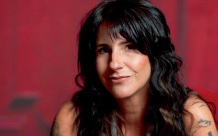
Romi Mayes
Romi Mayes has taken some hard knocks in her life, but she’s never faded away. For more than 25 years, Manitoba’s first lady of blues-rock has been a lynchpin of the Canadian roots scene. She earned that position the old-fashioned way, through her gritty, passionately emotive music. With her sizzling guitars and full-throated rasp, the Juno-nominated performer howls and purrs through razor-edged lyrics, rocking out wherever she can find a stage. She’s long been one of the hardest-working musicians on the circuit, keeping a busy slate of gigs and mentoring up-and-coming artists to get a foothold on the trails she blazed. Now, after a nine-year hiatus from the studio, Mayes has put her scintillating sound back on record with her long-awaited seventh album, Small Victories — a return that leaves no doubt, no matter the ups and downs, Mayes is here to stay.
Romi will be performing Friday, July 11, at 1:00 pm in Burr Oak.
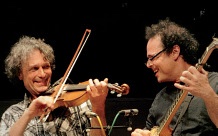
Leonard Podolak (with Matt Gordon)
Ireland’s Matt Gordon is a fiddler and singer, whose fleet-footed clogging and thigh-slapping hambone has taken stages by storm since the 1980s. Leonard Podolak is a virtuosic master of the clawhammer banjo, who for decades has whipped up some of Manitoba’s wildest roots parties with his band, The Duhks. Put those talents together, and they can promise you this much: we’re all gonna have a real good time. Longtime friends and musical collaborators, Gordon and Podolak deliver an exhilarating trip through old-time Appalachian music. Their performances seamlessly blend intricate instrumental lines with heartfelt singing and dazzling dance. They’ve teamed up on a few records over the years, including 2020’s bigband extravaganza Power Wagon: Live At Shanley’s. But the best way to experience this duo’s toe-tapping, hand-clapping chemistry is to see it live.
Podolak and Gordon will be performing A concert with a side of clogging Sunday, July 13, at 3:00 pm in Folk School.
